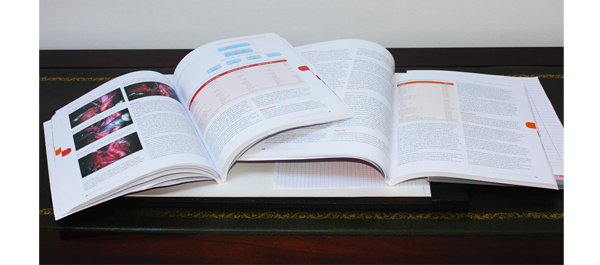Editorial: Cryosurgery for clinical T3 prostate cancer
There are limited data available on the outcomes of cryosurgery for clinical T3 prostate cancer, and as such, the role of cryosurgery for clinical T3 disease is currently undetermined [1]. Modern cryosurgery of the prostate, utilizing gas-based third-generation technology, a real-time monitoring system with ultrasonography and thermocouples, is associated with a low complication rate [7], although comparative outcomes of the different treatment modalities and long-term follow-up data remain to be seen.
Several aspects of cryosurgery can make it difficult to adequately control locally advanced prostate cancer. First, cryosurgery for clinical T3 cancer requires unique surgical expertise to control local disease while minimizing side-effects. Secondly, staging of locally advanced prostate cancer is challenging – it is difficult to accurately identify the extent of extracapsular extension, seminal vesicle involvement and/or lymph node metastasis. Thirdly, challenges in managing clinical T3 disease include the requirement of a more extensive ablation technique to appropriately target the extraprostatic disease and seminal vesicle involvement as well as treatment for possible microscopic metastasis, which might not be clinically detectable.
Two recent randomized trials compared outcomes of external beam radiation therapy with those of cryosurgery (including cT3 diseases with use of neo-adjuvant androgen deprivation therapy [ADT]), with contrasting results [2, 3]. Chin et al. [2] reported superiority of biochemical disease-free survival favouring external beam radiation therapy in relatively more advanced (bulky) disease, while Donnelly et al. [3] reported significantly fewer positive biopsy rates favouring cryosurgery in the relatively less advanced disease. These findings could suggest that more advanced bulky cases that require wider local control of bulky extraprostatic diseases are not suitable for cryosurgery, while in appropriately selected cases with fewer extraprostatic diseases, cryosurgery is an acceptable option (when combined with neo-adjuvant ADT). Although appropriately extended cryo-lesions that achieve lethal temperatures can control extraprostatic disease, there is a certain limitation in the extension of cryo-lesions without injury to vital peri-prostate organs, such as the urinary sphincter, rectal wall, bladder wall and ureters.
Evolving accuracy of preoperative diagnostic imaging to assess extraprostatic disease can enhance outcomes, and staging tissue sampling from suspected extraprostatic disease could also identify actual microscopic extension of the extraprostatic disease [4]. A recently updated nomogram predicting lymph node invasion [5] suggests that the probability of lymph node invasion in patients with cT3, PSA level >10 ng/mL, and biopsy primary Gleason grade 4 is 20% or greater. Clearly, the preoperative risk assessment of lymph node involvement using such a modern calculator is pertinent for appropriate patient selection. Finally, management decision should be made by a multidisciplinary team.
When combined with radiotherapy, neo-adjuvant ADT for high-risk and locally advanced prostate cancer has been associated with clinical benefit; however, when combining neo-adjuvant ADT with prostatectomy, there is pathological down-staging and reduction in the surgical positive margin but minimal improvement in overall or disease-free survival [6]. The role of neo-adjuvant and adjuvant ADT when combined with cryosurgery is still unknown. Clearly, a prospective study is needed to determine the optimal duration and method of ADT (whether to use LHRH analogue or combined blockade) and to analyse the side-effects, the quality of life and the cost-effectiveness of a combination of cryosurgery with ADT for cT3a and cT3b prostate cancer.
Osamu Ukimura, Andre Luis de Castro Abreu, Andrew J. Hung and Inderbir S. Gill
USC Institute of Urology, Keck School of Medicine, University of Southern California, Los Angeles, CA, USA
References
- Babaian RJ, Donnelly B, Bahn D et al. Best practice statement on cryosurgery for the treatment of localized prostate cancer. J Urol 2008; 180: 1993–2004
- Chin JL, Al-Zahrani AA, Autran-Gomez AM, Williams AK, Bauman G. Extended followup oncologic outcome of randomized trial between cryoablation and external beam therapy for locally advanced prostate cancer (T2c-T3b). J Urol 2012; 188: 1170–1175
- Donnelly BJ, Saliken JC, Brasher PM et al. A randomized trial of external beam radiotherapy versus cryoablation in patients with localized prostate cancer. Cancer 2010; 116: 323–330
- Ukimura O, Coleman JA, de la Taille A et al. Contemporary role of systematic prostate biopsies: indications, techniques, and implications for patient care. Eur Urol 2013; 63: 214–230
- Briganti A, Larcher A, Abdollah F et al. Updated nomogram predicting lymph node invasion in patients with prostate cancer undergoing extended pelvic lymph node dissection: the essential importance of percentage of positive cores. Eur Urol 2012; 61: 480–487
- Shelley MD, Kumar S, Wilt T, Staffurth J, Coles B, Mason MD. A systematic review and meta-analysis of randomised trials of neo-adjuvant hormone therapy for localised and locally advanced prostate carcinoma. Cancer Treat Rev 2009; 35: 9–17
- Ward JF, DiBlasio CJ, Williams C, Given R, Jones JS. Cryoablation for locally advanced clinical stage T3 prostate cancer: a report from the Cryo-On-Line Database (COLD) Registry. BJU Int 2014; 113: 714–718



